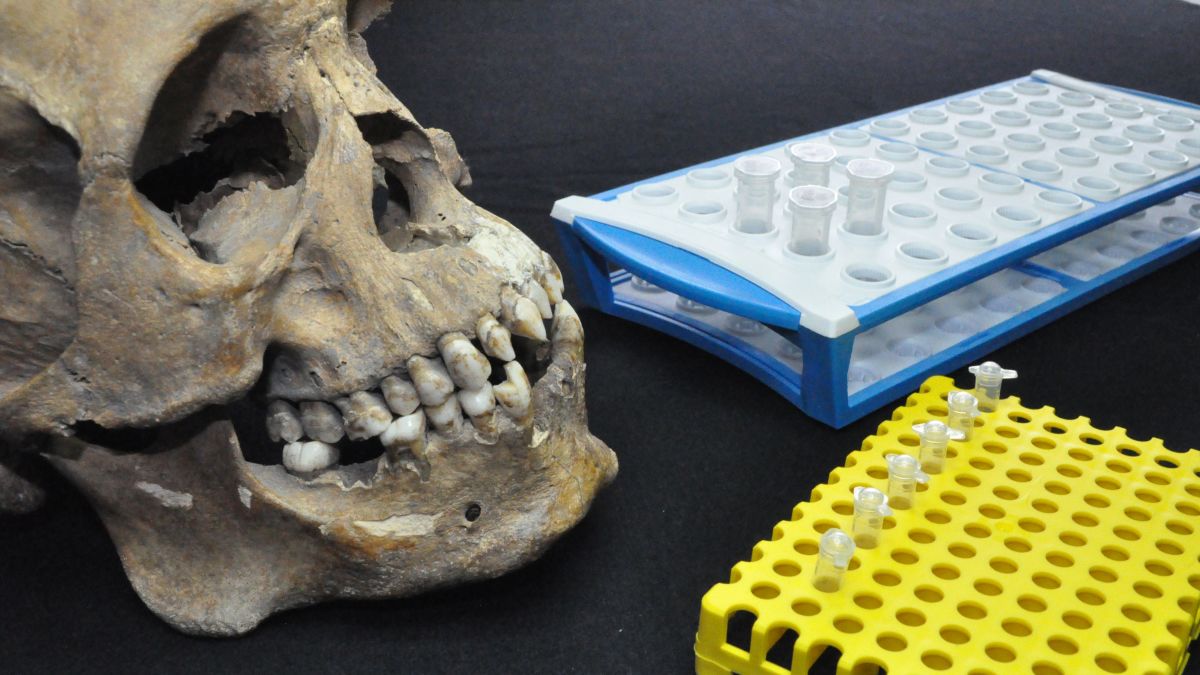Three skeletons belonging to African individuals have been uncovered at a mass grave in Mexico City. They represent some of the first African people to arrive into slavery in the New World. An interdisciplinary analysis of these remains is shedding new light on this grim period of history and the harsh conditions endured by the first wave of enslaved Africans in the Americas.
“To the best of our knowledge, they are the earliest genetically identified first-generation Africans in the Americas,” according to the authors of a new paper, published today in Current Biology.
Found in Mexico City, the three skeletons were buried in a mass grave near the former site of the Hospital Real de San José de los Naturales. This early hospital dates back to the early colonial period of New Spain and was primarily used to treat indigenous peoples. All three skeletons date back to this early colonial period in the 16th century, which means these individuals were among the first wave of Africans to be kidnapped and brought to the Americas via the transatlantic slave trade.
An interdisciplinary analysis of these remains paints a bleak picture of their lives, showing evidence of forged migration, physical abuse, and exposure to infectious diseases.
“By investigating the origin and disease experience of these individuals through molecular methods and evaluating the skeleton[s] for signs of life experience and cultural affinity, we illuminate, in some measure, the identity, culture, and life of these people whose history has largely been lost,” wrote the authors in the new study, co-authored by Johannes Krause from the Max Planck Institute for the Science of Human History.
The origin of this story goes back to 1518, when Charles I of Spain authorized the transfer of enslaved Africans to the Viceroyalty of New Spain, which at the time included most of what is now Mexico, the Caribbean, and parts of the U.S. and Canada. By 1779, an estimated 130,000 to 150,000 Africans had been forcibly relocated to the Viceroyalty, according to the researchers. Of these, some 70,000 arrived between 1600 and 1640. Writing in the new paper, the authors explained the sudden increase in relocation of enslaved individuals:
…in part due to a reduction in the indigenous labor force that resulted from both casualties in the many conflicts during the European conquest and from diseases (among them, small-pox, measles, and typhoid fever) that devastated nearly 90% of the native population. Creoles, Africans, mulattoes, and other African-descended groups were thought to have higher resistance to these diseases compared to Indigenous Americans and Europeans making them desirable assets. Further to this, Las Leyes Nuevas (The New Laws) of 1542 prohibited the use of Native American labor as slaves in New Spain.
To analyze the three skeletons, the authors combined genetic and isotopic evidence, along with physical evidence gleaned from the remains.
Proof that these people came from

